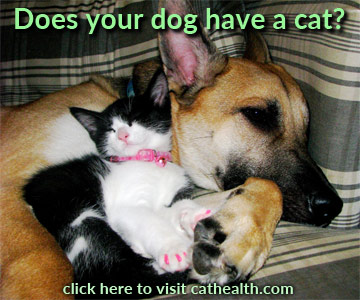Liver Shunts in Dogs

A portosystemic shunt, or liver shunt, is a condition in dogs which is usually congenital, meaning the dog is born with it.
What Is a Canine Liver Shunt?
A liver shunt occurs when the portal vein, which carries blood from the dog's system to the liver for detoxification, is abnormally connected to another vein, allowing blood to bypass its trip through the liver and remain unfiltered.
The most common way a liver shunt forms is when a connecting vein, the ductus venosis, which is used when the dog is in utero, doesn't collapse as it should after birth. Sometimes, another vein develops where it shouldn't, and that second vein stays open after the ductus venosis closes.
When blood is not properly detoxed by the liver, harmful substances build up and are carried throughout the body, having adverse effects.
Signs of Liver Shunts in Dogs
Dogs with liver shunts may have some or all of the following signs:
- Poor growth
- Disorientation
- Abnormal behaviors such as staring into space or circling
- Head pressing
- Seizures
Signs may appear or worsen after a meal.
Liver shunts are usually diagnosed in young dogs, but sometimes they may not show signs until they are older. Additionally, some dogs may not show the signs above but instead have recurrent bladder infections, bladder stones, or kidney problems.
Breeds More Commonly Affected by Liver Shunts
Dog breeds that develop liver shunts more commonly than other breeds include:
- Yorkshire terriers
- Cairn terriers
- Beagles
- Irish wolfhounds
Diagnosis of Liver Shunts in Dogs
A veterinarian will usually become suspicious of a portosystemic shunt from the history of clinical signs. Diagnostic tests are then performed to confirm that suspicion. These tests include:
- CBC and chemistry tests: Mild anemia and increases in kidney and liver values may be seen in dogs with liver shunts.
- Urinalysis: Urate crystals may be present in the urine of dogs with liver shunts.
- Bile acids test: This test involves taking a blood sample from the dog after a period of fasting, feeding a high-fat meal, and then taking another blood sample two hours later. Typically, bile acids are released to help break down fats in a meal; then they are reabsorbed by the liver. Normally, bile acids should be low in the pre-meal sample and only a bit higher in the post-meal sample. Dogs with liver shunts may have high bile acids in both samples.
- Ultrasound: Doppler flow analysis may be used to determine whether there is an abnormal open blood vessel bypassing the liver.
- CT or MRI: These specialized tests can take a good look at the liver and its blood flow.
- Exploratory surgery: Physically examining the liver and its vessels can diagnose a liver shunt.
Treatment of Canine Liver Shunts
Some dogs with portosystemic shunts may be managed medically. They are given a special prescription diet and treated with medications to help remove the toxins the liver is unable to process or mitigate their damage to the body.
Surgery is required to definitively treat liver shunts in dogs. A special constrictor device is placed on the abnormally open vein, and it constricts slowly over the following few weeks, causing the vein to scar shut. A special diet and medications are used for a couple of months following the surgery, and clinical signs and blood tests are monitored closely.
You May Also Like These Articles:
Urinary Tract Infection: UTI in Dogs
One Simple Test Your Dog Needs Every Year
Parvo: What You Need to Know About Parvovirus in Dogs
Why Does My Dog Bring Up Food After Eating?
Disclaimer: This website is not intended to replace professional consultation, diagnosis, or treatment by a licensed veterinarian. If you require any veterinary related advice, contact your veterinarian promptly. Information at DogHealth.com is exclusively of a general reference nature. Do not disregard veterinary advice or delay treatment as a result of accessing information at this site. Just Answer is an external service not affiliated with DogHealth.com.
Notice: Ask-a-Vet is an affiliated service for those who wish to speak with a veterinary professional about their pet's specific condition. Initially, a bot will ask questions to determine the general nature of your concern. Then, you will be transferred to a human. There is a charge for the service if you choose to connect to a veterinarian. Ask-a-Vet is not manned by the staff or owners of DogHealth.com, and the advice given should not delay or replace a visit to your veterinarian.



